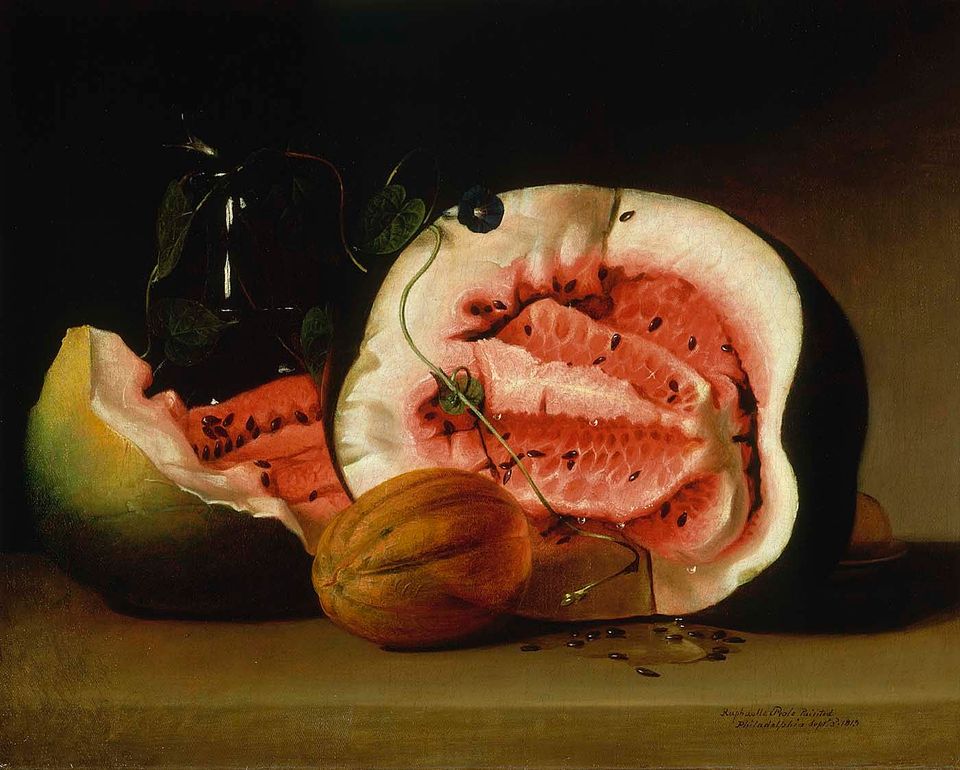
This post is part of an ongoing series on Eye Level: "Q and Art," where American Art's Research department brings you interesting questions and answers about art and artists from our archive.
Answer: You have to look closely to see the ghost-like image, which is called a pentimento. As a painting ages, the upper layers of paint occasionally become transparent, allowing images that were painted over by the artist to become visible. Pentimento, Italian for repentance, is also the term for an underlying sketch that is revealed when a painting is examined with infrared reflectography or x-ray. Art historians value pentimenti, because they may show where the artist "repented" or changed his mind about the composition. Other pentimenti may demonstrate how the artist painted: finishing the shape of the watermelon, then adding the smaller melon. Whether they are naturally visible or viewed through technology, pentimenti are fascinating because they offer a glimpse into the mind and process of the artist at work.Question: In Raphaelle Peale's Melons and Morning Glories, why is the smaller melon translucent, allowing the edge of the watermelon to show through the paint?
To read more about Raphaelle Peale, America's first professional still-life painter, look for the following books at your local library: Nicolai Cikovsky, Jr.'s exhibition catalog Raphaelle Peale Still Lifes and Lillian B. Miller's The Peale Family: Creation of a Legacy 1770-1870.
Read the other Q and Art blog posts in this series.


















